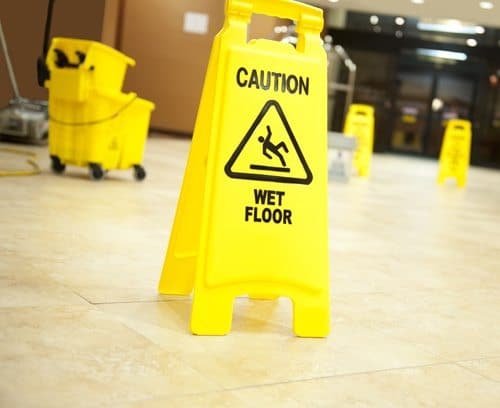
In recent years, Tesla’s Autopilot system has become synonymous with advanced driver assistance technology. However, so have Tesla autopilot crashes. The number of accidents involving Tesla vehicles equipped with Autopilot has skyrocketed, revealing a darker side to this highly touted feature.
If you’ve been injured in a car crash, talk to an Orlando car accident attorney at the Martinez Manglardi personal injury law firm. Call 866-730-3508 for a free consultation. The Martinez Manglardi personal injury law firm has been serving clients in Orlando and the surrounding areas for over 30 years. Convenient locations throughout Central Florida.
The Rise of Autopilot
Tesla first introduced Autopilot back in 2014, branding it as a level two driver-assist feature designed to support and assist drivers in performing the driving task. However, it’s important to note that Autopilot is not an autonomous driving technology. Drivers are required to keep their hands on the wheel and be ready to take control at a moment’s notice.
Disturbing Crash Statistics
A recent analysis of National Highway Traffic Safety Administration (NHTSA) data by The Washington Post has revealed the shocking extent of Tesla Autopilot crashes. Since 2019, there have been a staggering 736 crashes involving Tesla vehicles in Autopilot mode, far surpassing previous reports. These incidents highlight the inherent dangers associated with the increasing use of Tesla’s driver-assistance technology.
Alarming Increase in Fatalities
The number of deaths and serious injuries linked to Tesla autopilot crashes has also seen a significant rise. Initial reports in June 2022 only documented three deaths definitively connected to Autopilot. However, the latest data tells a much grimmer story, with at least 17 fatal incidents, 11 of which occurred since May 2022. Additionally, there have been five reported serious injuries. These statistics paint a harrowing picture of the potential dangers posed by Tesla’s Autopilot system.
The North Carolina Tragedy
One tragic example of the devastating consequences of Autopilot crashes occurred in North Carolina. Tillman Mitchell, a 17-year-old student, was struck by a Tesla Model Y allegedly in Autopilot mode while disembarking from a school bus. The car failed to slow down despite the bus’s stop sign and flashing red lights. Mitchell suffered severe injuries, including a fractured neck and a broken leg. His story serves as a poignant reminder of the risks associated with overreliance on autonomous driving technology.
Elon Musk’s Defense
Despite the growing number of incidents, Tesla CEO Elon Musk has consistently defended the safety of Autopilot. Musk maintains that cars operating in Autopilot mode are safer than those driven solely by human operators, citing crash rate comparisons. He continues to advocate for the development and deployment of features that enable Tesla vehicles to navigate complex driving scenarios, such as maneuvering around stopped school buses, fire engines, stop signs, and pedestrians. However, the increasing number of crashes raises questions about the effectiveness and reliability of Autopilot.
The Role of Government Agencies
In response to the alarming statistics, the National Highway Traffic Safety Administration (NHTSA) has launched investigations into the Autopilot system. The agency is particularly concerned with how Autopilot interacts with stopped emergency vehicles, a known issue that has persisted for years. NHTSA’s Office of Defects Investigation has upgraded its inquiry into Tesla vehicles to an Engineering Analysis, indicating a heightened level of scrutiny. This ongoing investigation covers various Tesla models, including the Model Y, Model X, Model S, and Model 3, affecting an estimated 830,000 vehicles.
Public Perception and Trust
The increasing reports of Autopilot crashes have raised questions about public perception and trust in Tesla’s technology. Transportation Secretary Pete Buttigieg has criticized the misleading nature of Autopilot’s name, highlighting the need for clearer communication about the system’s limitations. Many experts argue that people place too much trust in these driver-assistance technologies, often assuming that the technology can fully replace human intervention. Education and awareness campaigns are crucial to ensuring that drivers understand the limitations and potential risks associated with Autopilot.
The Role of Tesla and Elon Musk
As the manufacturer and visionary behind Autopilot, Tesla and its CEO, Elon Musk, bear significant responsibility for the safety and reliability of the system. Critics argue that Musk’s decisions, such as eliminating radar sensors from certain Tesla models, may have contributed to the increase in crashes. Tesla’s response to the rising number of incidents and its cooperation with government agencies will be closely scrutinized as the investigation unfolds.
Moving Forward: Safety, Regulation, and Accountability
The revelations surrounding Tesla Autopilot crashes underscore the urgent need for improved safety measures, stricter regulation, and increased accountability. Government agencies must work in tandem with automakers to establish comprehensive testing protocols and safety standards for driver-assistance technologies. Additionally, continued research and development should focus on addressing the limitations and potential hazards associated with these systems.
The alarming number of Tesla Autopilot crashes and the corresponding increase in fatalities demand immediate attention and action. As technology advances, it is crucial to strike a balance between innovation and safety. Only through robust oversight, transparent communication, and a commitment to continuous improvement can we navigate the road ahead toward a safer and more reliable autonomous driving future.
If you are injured in a car accident caused by the negligence of another motorist, an aggressive and experienced personal injury attorney can help you recover losses. Call 866-729-9541 for a free consultation with a top attorney at the Orlando car accident law firm of Martinez Manglardi.





